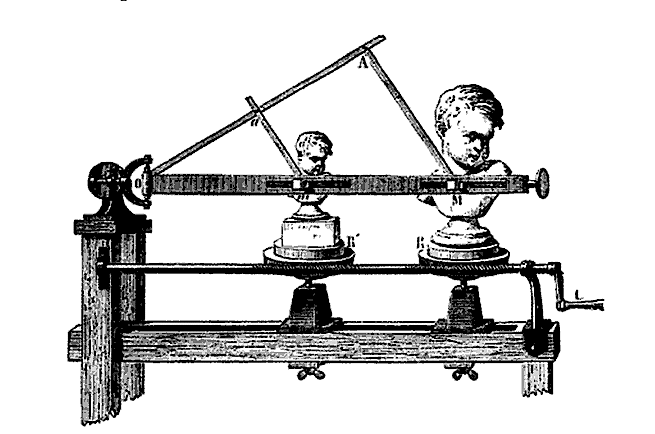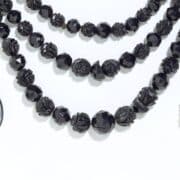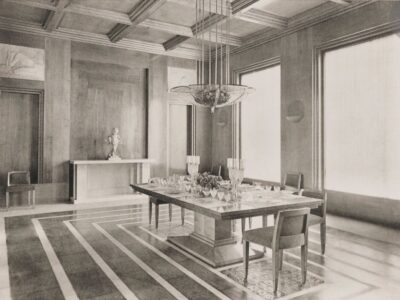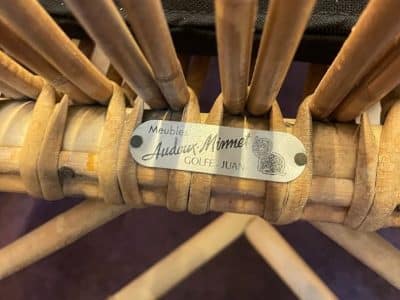Ferdinand Barbedienne (1810-1892) was a French metalworker and bronze caster who became known for his high-quality reproductions of antique sculptures and works of art. He founded the casting house Maison Barbedienne in 1834, which quickly became one of the most important art bronze companies in France in the 19th century. He was an aesthete, outstanding technician, and a wise industrialist.
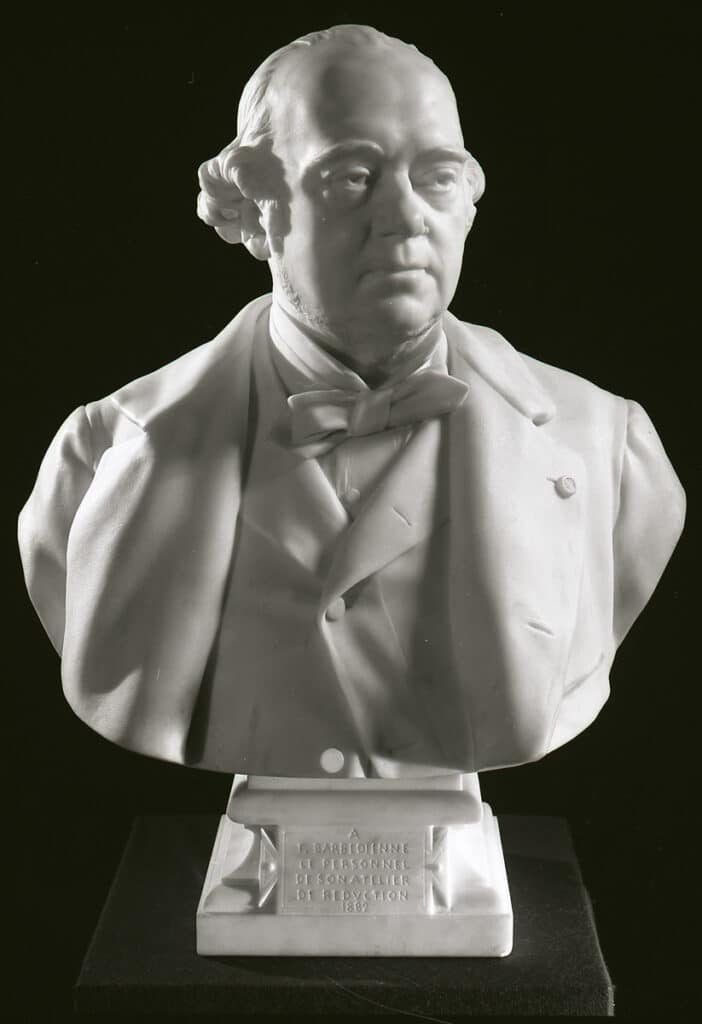
Bust of Ferdinand Barbedienne by Henri Chapu – 1882. © Musée des Beaux-Arts de Caen, picture by Martine Seyve
Early Life of Ferdinand Barbedienne
Born in Saint-Martin-de-Fresnay, Normandy, France in 1810, Barbedienne was the son of a farmer and grew up in a rural setting with no connection to the art world. Barbedienne received a basic education and worked on his father’s farm until he was 18 years old. After leaving the farm, Barbedienne moved to Paris to pursue a career in business. He began trading in commodities such as wallpaper, grains, coal, and wine, and quickly established himself as a successful businessman.
Partnership with Achille Collas
It was through his business dealings that Barbedienne first became interested in the arts. He met Achille Collas (1795-1859), a sculptor and inventor who had developed the reduction pantograph as a way to make accurate copies of existing sculptures, particularly those from the ancient world. This machine was capable of reducing a large sculpture to a smaller size while retaining all of the details and proportions of the original. The reduction pantograph was an important innovation in the field of sculpture, and it would play a major role in Barbedienne’s career.
Establishment of the Maison Barbedienne
Barbedienne saw the potential of this machine for making accurate reproductions of antique sculptures, which were in high demand among collectors and museums. He entered into a partnership with Collas in 1838, establishing a foundry in Paris to produce bronze casts of antique sculptures. The foundry became known for producing high-quality reproductions of sculptures by ancient Greek and Roman artists, quickly gaining a reputation for technical excellence and artistic skill. The reproductions produced by the foundry were praised for their accuracy and attention to detail, and they were sought after by collectors and museums around the world.
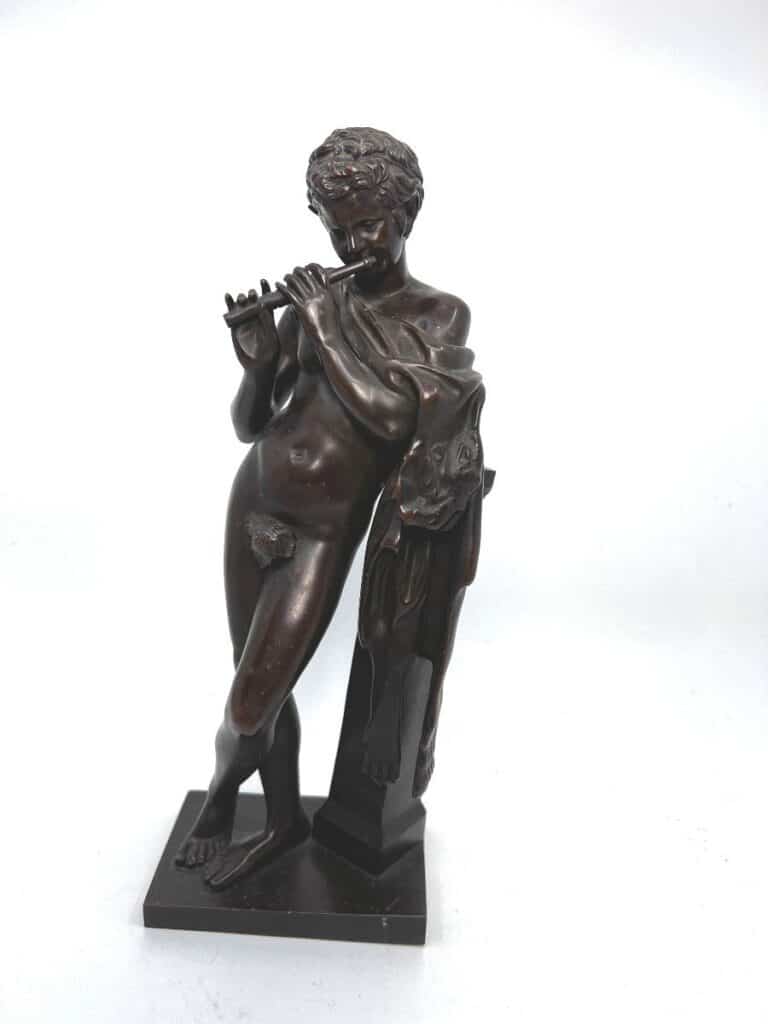
Bronze sculpture of Nude Fawn Playing a Flute. Based on an antique marble in the Louvre (1st-2nd century CE). © Martine Boré Antiques
The Democratization of Bronze
Through his partnership with Achille Collas (1795-1859), Barbedienne was able to considerably extend the production of small edition bronzes. The success of the Maison Barbedienne was largely based on its commercial policy and strategy, which emphasized quality reproduction and accessibility. The Venus de Milo, the Diana of Gabies, and the Lorenzo de Medici were among the first of the works of the great museums to be reproduced. Barbedienne’s goal was to democratize art by making faithful reproductions of masterpieces accessible to more people. His choice of an “academic” repertoire close to the dominant artistic tastes of the time met the requirements of a bourgeois clientele interested in classical values.
Expansion of the Maison Barbedienne
As their clientele grew, the Maison Barbedienne expanded their reproduction to include the works of more recent artists, such as the highly acclaimed works of French sculptor Antoine Louis Barye. He managed to stand out from the competition and obtain the collaboration of the most fashionable living sculptors, such as Antonin Mercié, Paul Dubois, Emmanuel Fremiet, Auguste Clésinger, Caffieri, Clodion, and many others.
At the same time, he developed a range of decorative objects and furniture (vases, candelabras, clocks, etc.), enamel objects, cloisonné as well as numerous models of bronze furniture. From 1855 to 1888, the sculptor Louis-Constant Sévin (1821-1888) became Barbedienne’s right hand, heading creation and becoming an essential contributor for the house’s growth. His work was the embodiment of historicism and eclecticism for Barbedienne, who leveraged his taste and talent for antique art by associating it with the great art of the Renaissance and other periods.
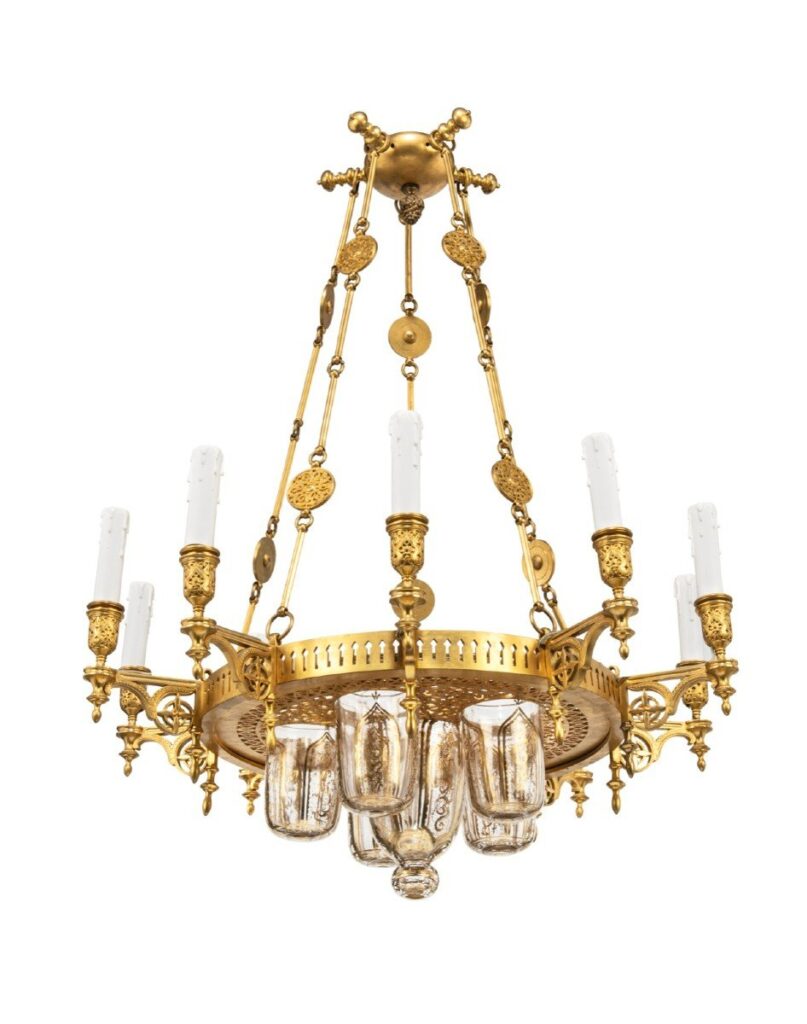
Ormolu ten-light chandelier in the Islamic style, F. Barbedienne © Le Brun Antiques & Works of Art
Enamels Bursting With Creativity and Color
Another major contribution by Barbedienne was his innovations in enamel work. The first attempts by the Barbedienne house in the art of enamel seem to date back to 1858, with the appearance of Byzantine champlevé enamels. They then moved into painted enamels in the neo-Renaissance style, created thanks to the exclusive collaboration of Alfred-Paul-Louis Serre (1837-1906).
Serre first started working as a painter in jewelry. He approached enameling with miniature grisaille paintings in the style of Watteau and Boucher, having received lessons from the enameler Pierre Piot in the workshop of the goldsmith L. Charlot Fils. Serre was first noticed by Barbedienne for his creativity and the excellence of his work, and worked for Barbedienne until his death. Serre received a gold medal at the 1889 Exposition Universelle for his colorful painted enamels on a copper Barbedienne masterpiece, a monumental clock created from 1878 to 1889 and held in the Hôtel de Ville of Paris since 1936.
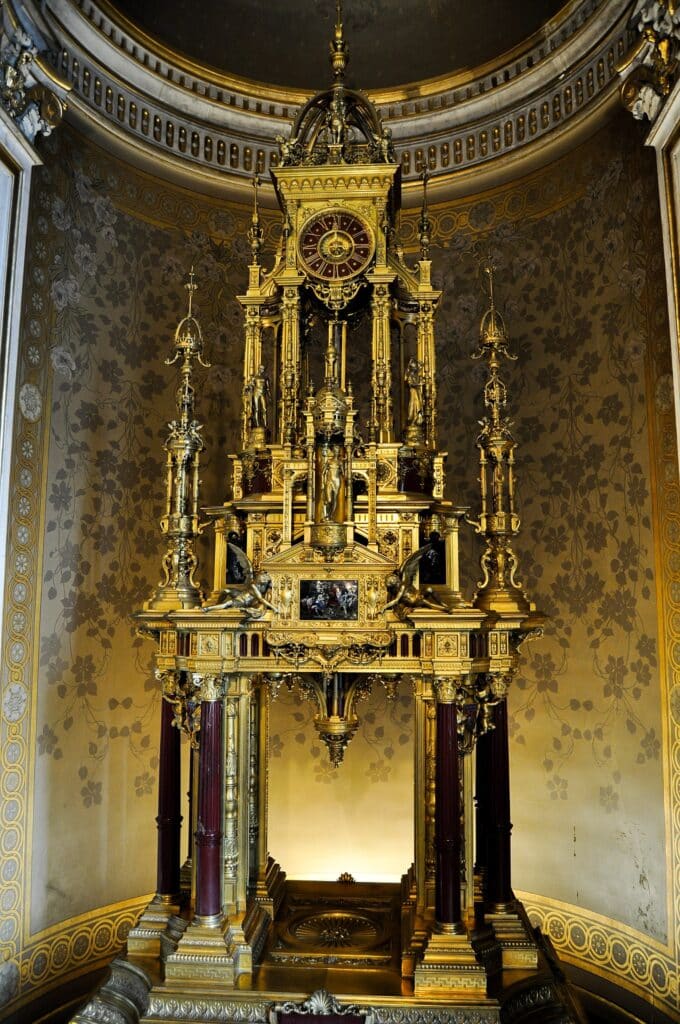
Monumental clock 1878-1889, F. Barbedienne, C. Sévin, A. Serre, T. Noël, L.-A. Eude (Hôtel de Ville de Paris CC Joël Galeran)
Another artist who became closely associated with Barbedienne was André-Fernand Thesmar (1843-1912), who began working exclusively for him in 1872. This was an interesting career evolution for someone who had begun his career as an apprentice specialized in flower painting in a fabric and upholstery factory. Under Barbedienne, Thesmar developed cloisonné enamels that capitalized on the blossoming popularity of japonisme art in France and beautifully contributed to it with the influence of designers like Édouard Lièvre. Thesmar’s enamel creations were beautifully imbued with Japanese and Asian influence, achieving great recognition. Several of the pieces that he created with Barbedienne received public acclaim at the World’s Fairs, including a large tray with a golden pheasant at the Vienna exhibition in 1873 and another with wild duck at the Paris exhibition in 1878.
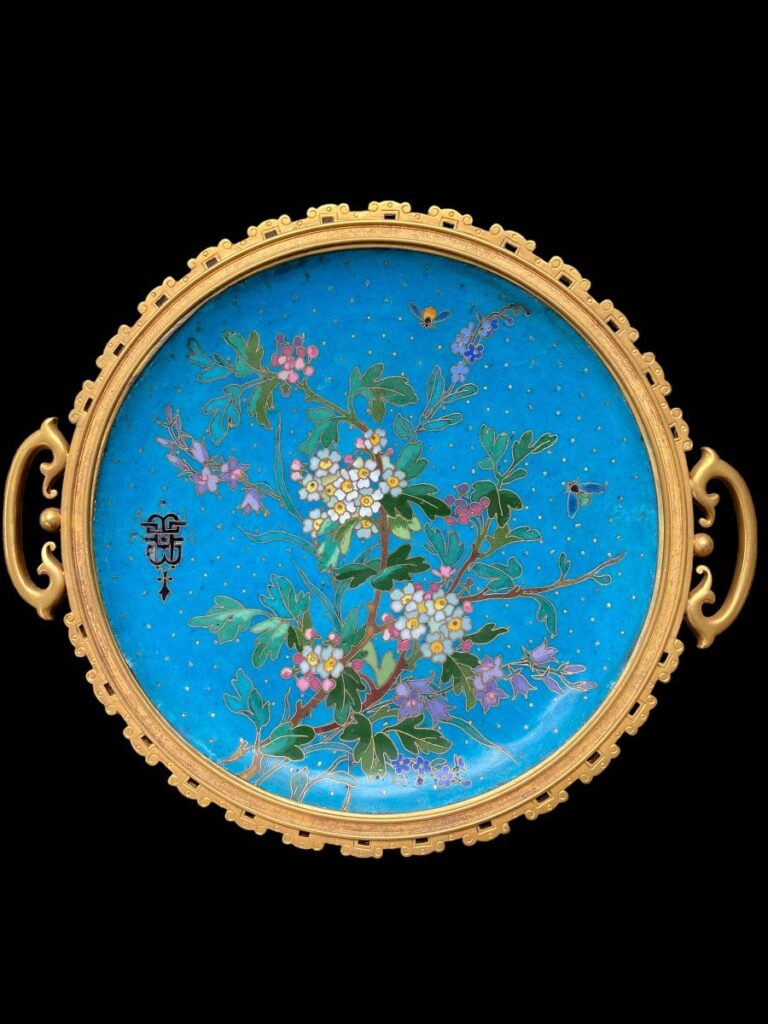
Plate in gilt bronze and enamel, F. Barbedienne, A.-F. Thesmar © Le Brun Antiques & Works of Art
Barbedienne’s Recognition and Legacy
Barbedienne’s success as a bronze caster was recognized with numerous awards and honors. He was awarded the Legion of Honor in 1855, and his work was exhibited at international exhibitions in London, Paris, and Vienna. Barbedienne’s foundry also received commissions from the French government and other prestigious clients, including the Vatican. In addition to his work as a bronze caster, Barbedienne was also a philanthropist and a collector of art. He donated money to charitable causes and purchased works of art to donate to museums and public institutions. Barbedienne also served as the president of the Société des Artistes Français, a society of artists and art patrons.
The Maison Barbedienne was also awarded the Grand Prix at both the 1878 and 1889 World’s Fairs.
It is to Monsieur Barbedienne that we owe this renaissance of bronze in large part. Is it necessary to say that he obtained the highest award that the jury could award? He remained the undisputed leader of this fine industry. In his unique establishment, all specialties are represented. An outstanding industrialist, Mr. Barbedienne affirmed his horror of mediocrity.”
— Emile Colin in the report of the international jury of the 1889 World’s Fair by Albert Picard
He continued to work until his death in 1892, and his legacy as a master of bronze casting lives on through the many works of art he produced and the techniques he developed. He played a major role in the revival of interest in ancient art during the 19th century, and his reproductions of antique sculptures helped to make these works accessible to a wider audience. Barbedienne’s technical innovations, such as the use of the reduction pantograph, also had a lasting impact on the field of sculpture.
At Barbedienne’s passing, his company was employing over 600 people. Leadership of the company was taken over by his nephew Gustave Leblanc-Barbedienne who further developed the foundry, specializing in monumental bronzes. In 1898, a major commercial achievement of Leblanc-Barbedienne was the signature with Auguste Rodin (1840-1917) of a contract for ten years to produce copies of Le Baiser and L’Eternel Printemps. The Maison Barbedienne closed in 1954.
You May Like
Barbedienne Artworks | Bronze Sculptures | Animal Bronze | Asian Bronze


